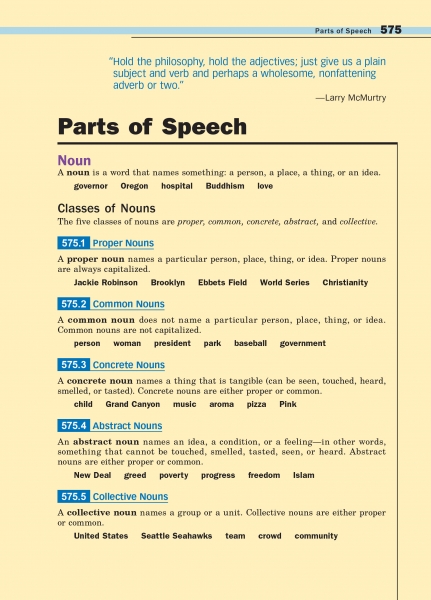Page 575 from

Start-Up Activity
To present this material, start by writing Einstein's famous equation on the board: E = mc². Of course, this equation means "Energy equals mass times the speed of light squared." It expresses the fundamental relationship between matter (mass) and energy, the primary components of our universe.
English recognizes the same basic components: nouns (matter) and verbs (energy). All of the other parts of speech simply modify (adjective, adverb, prepositions), connect (conjunctions), or take the place of (pronouns) these two parts. So, students don't need to learn eight parts of speech, to start. They should focus on nouns and verbs. Then they can learn about the other parts in relation to these fundamental building blocks.
Think About It
“To some people, power is a noun. To others, it's a verb.”
—Andre Carson

Start-Up Activity
To present this material, start by writing Einstein's famous equation on the board: E = mc². Of course, this equation means "Energy equals mass times the speed of light squared." It expresses the fundamental relationship between matter (mass) and energy, the primary components of our universe.
English recognizes the same basic components: nouns (matter) and verbs (energy). All of the other parts of speech simply modify (adjective, adverb, prepositions), connect (conjunctions), or take the place of (pronouns) these two parts. So, students don't need to learn eight parts of speech, to start. They should focus on nouns and verbs. Then they can learn about the other parts in relation to these fundamental building blocks.
Think About It
“To some people, power is a noun. To others, it's a verb.”
—Andre Carson